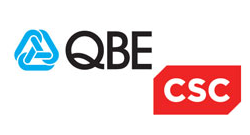AI Policy Is Done – So How Do You Enforce It?
Most organisations today have reached the same point in their GenAI journey: the policy is documented, leadership has approved it, and employees have been trained on the basics. Yet when you ask security teams whether they can actually enforce that policy, the answer is often less confident.
You’ll typically hear something like this:
- Have you published an AI policy and had it signed off?
Yes. - Have staff been trained on responsible use?
Yes. - Can you enforce the policy, monitor compliance, and identify high-risk behaviour?
No – our existing security and governance tools don’t support that.
This gap is common. Many security platforms still struggle with the nuance of GenAI usage, and few provide real-time user guidance or detailed insight into prompts, responses, and behavioural risk.
But the deeper issue is this: most organisations jump straight into discussing how to enforce the policy without first defining what “enforcement” actually means in the context of GenAI. Without a shared standard, tool evaluations turn into internal debates, and security teams lack a consistent yardstick.
Define the Enforcement Standard Before Choosing the Tool
Before implementing any controls, you need a clear framework that defines the what of enforcement. This can be captured in a policy enforcement plan or internal standard built around six core dimensions:
1. Categorise GenAI Applications for Different Enforcement Levels
Not all GenAI tools should be treated equally. Enterprise-approved platforms like Microsoft Copilot, ChatGPT Team, or in-house models warrant different controls compared with consumer apps found online. Creating clear categories allows you to apply the right enforcement level to each class of application.
2. Establish Data Protection Rules for AI Inputs
Your standard should clearly state what kinds of data employees may or may not share with GenAI systems. This usually includes restrictions involving:
- Personal data
- Customer records
- Confidential business information
- Intellectual property
Enterprise-approved apps may have more flexible allowances, while public tools require stricter controls.
3. Define Acceptable Use Boundaries
GenAI is versatile, and employees will always find new ways to use it. Set boundaries on what types of content can be generated. Many organisations limit or restrict the creation of:
- Contractual language
- Source code
- Highly sensitive business outputs
These boundaries may vary by job role, business unit, and application category.
4. Decide How Deep Monitoring and Analytics Should Go
Monitoring GenAI usage is a major part of enforcement. Evaluate elements such as:
- Authentication and access requirements
- Logging of AI activity
- Whether prompts and outputs should be captured
- Role-based access to AI logs
This is often the most sensitive part of enforcement and must be handled with transparency and governance.
5. Build In-Context Awareness and Real-Time Guidance
Basic training is not enough. Your enforcement model should define:
- How employees are informed about monitoring
- What real-time nudges, warnings, or guardrails appear inside the AI tools
- How users are coached to correct risky actions
Real-time feedback reduces risk while improving user confidence and adoption.
6. Establish a Clear Process for Handling Non-Conformities
When risky or repeated violations occur, the organisation needs a defined process. Consider:
- What triggers a review
- How departments are engaged
- How insights are fed back into training or policy improvement
- Whether support is required to help teams use GenAI more effectively while staying compliant
This closes the loop between policy, behaviour, and operational outcomes.
Conclusion: Enforcement Turns Policy Into Enablement
A GenAI policy is not meant to restrict innovation; it exists to enable responsible, confident adoption. By defining a clear internal enforcement standard – the what – organisations can then select the right governance and security tooling – the how – to operationalise their strategy.
At HANDD, we see this every day: effective GenAI governance is not about shutting things down, but giving employees the freedom to use AI securely, compliantly, and without fear of accidental misuse. When the enforcement model is well-defined, technical controls naturally fall into place.
Ready to Operationalise Your AI Policy?
HANDD helps organisations implement secure, structured, and fully governed GenAI adoption.
If you’d like support defining your enforcement standard or evaluating the right tooling, get in touch.
Contact us at: info@handd.co.uk





















